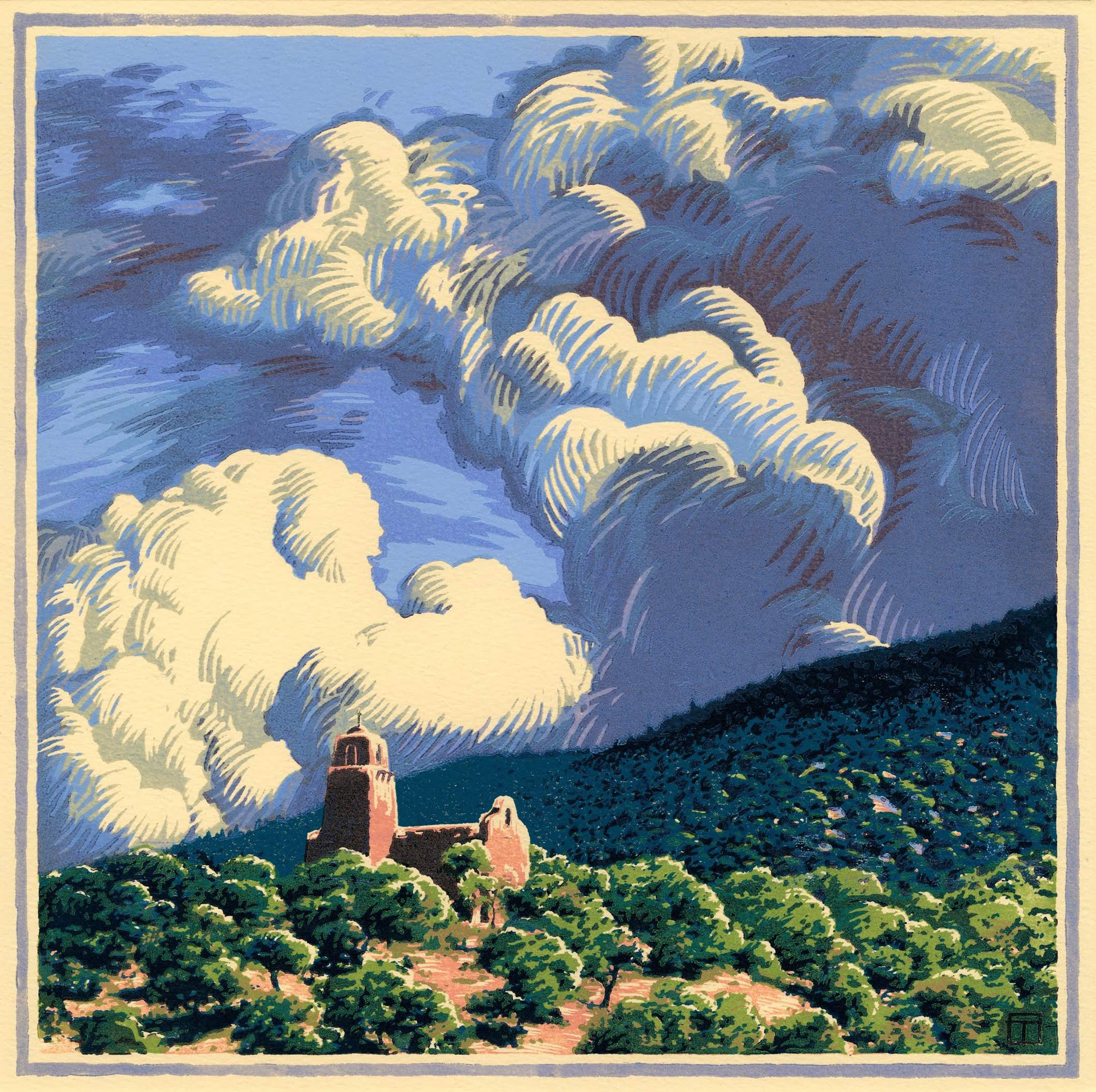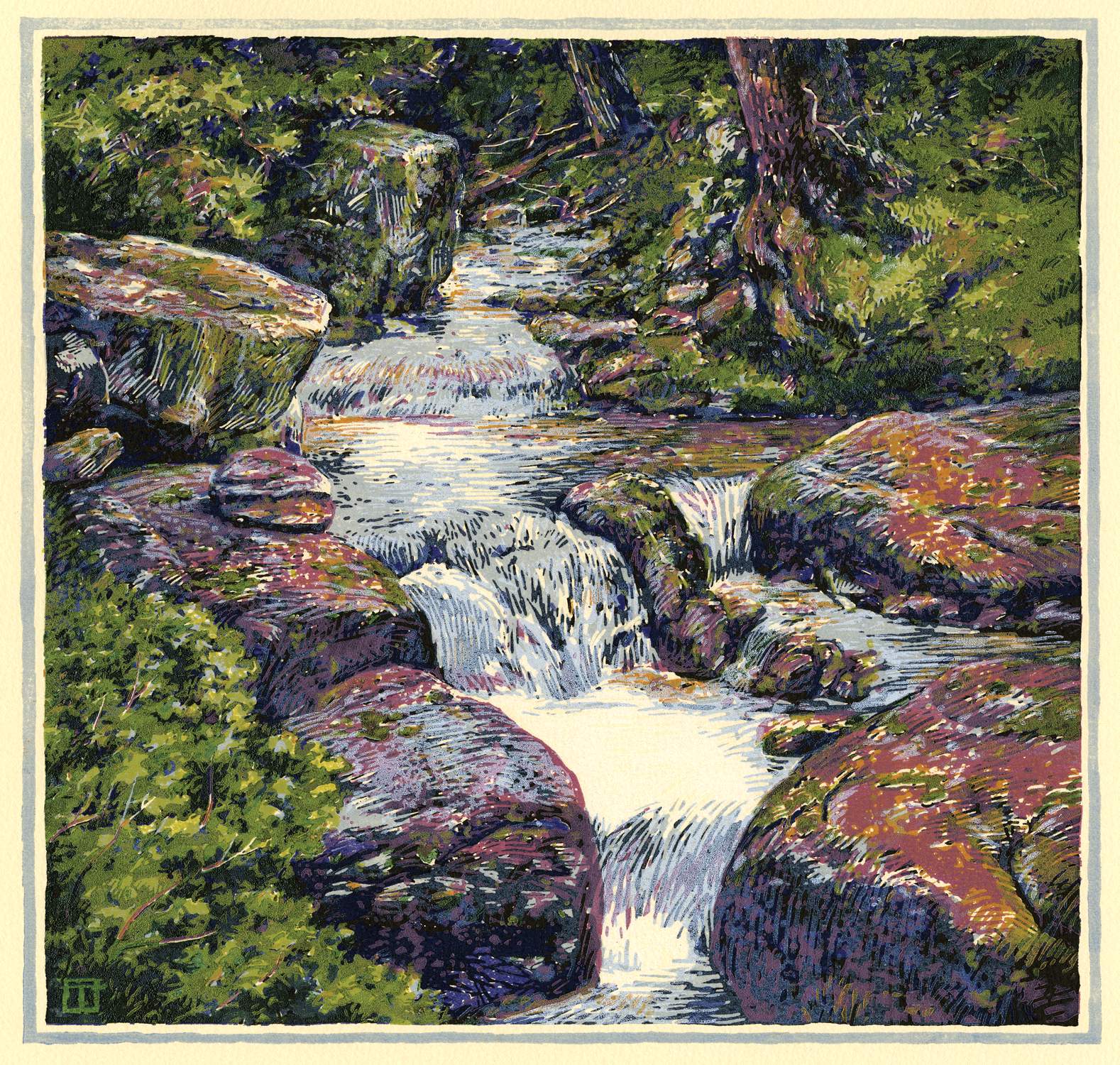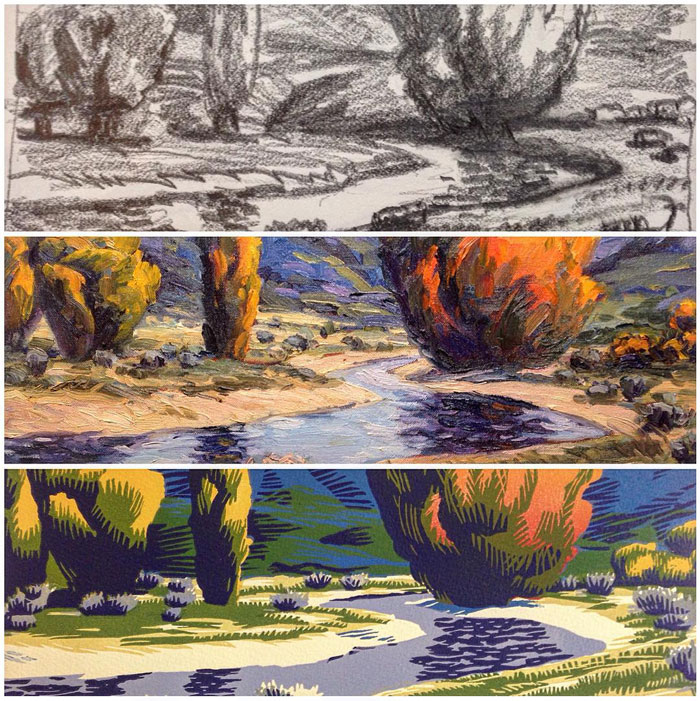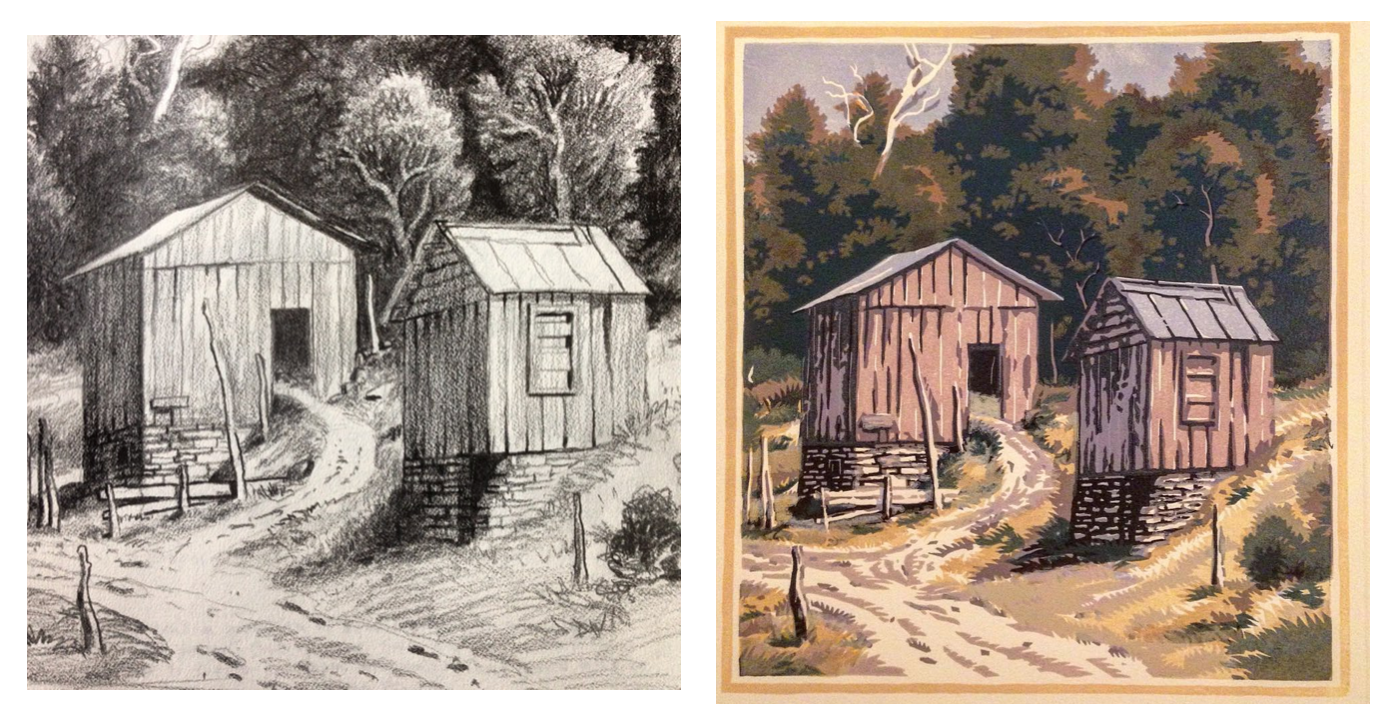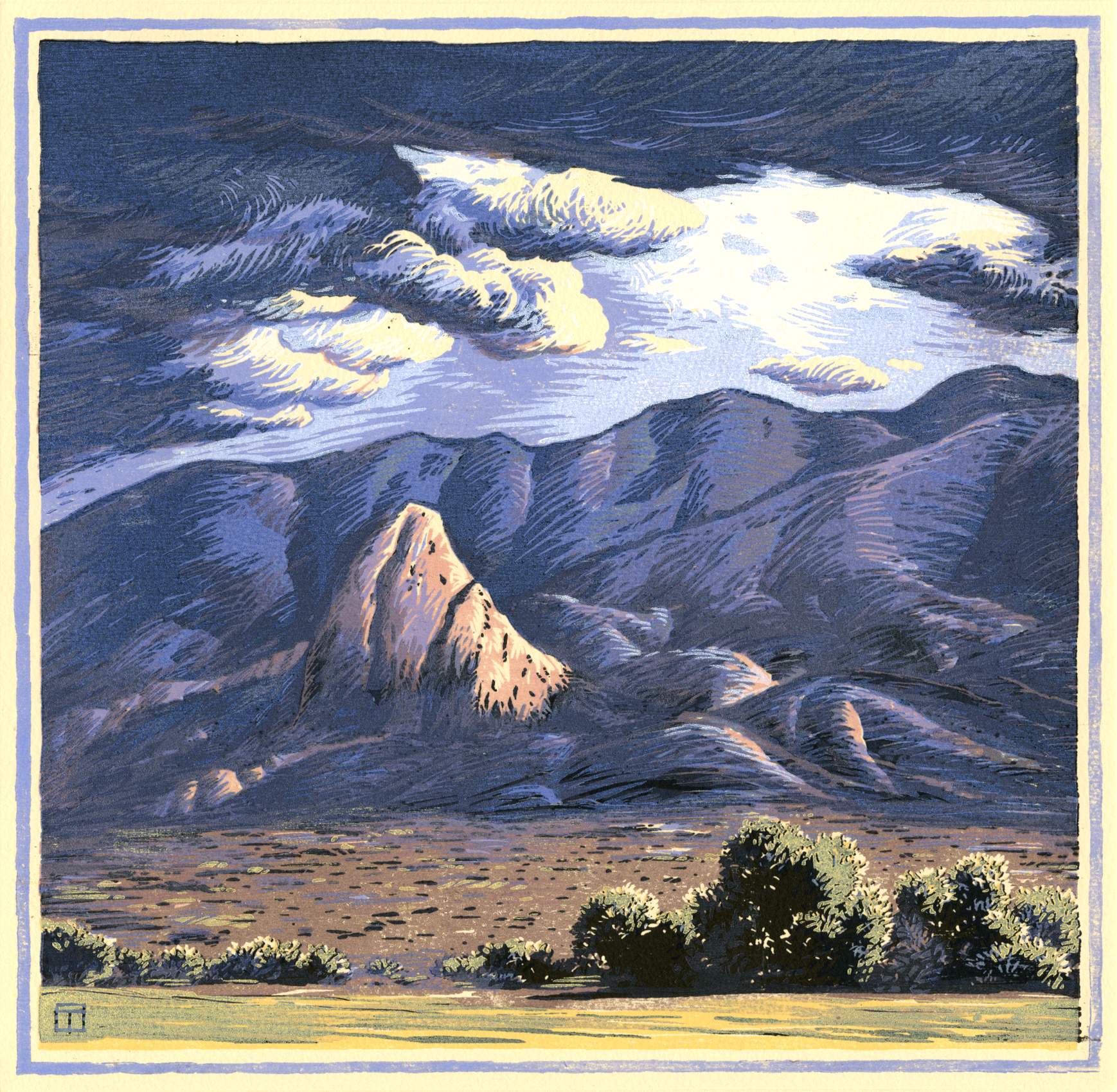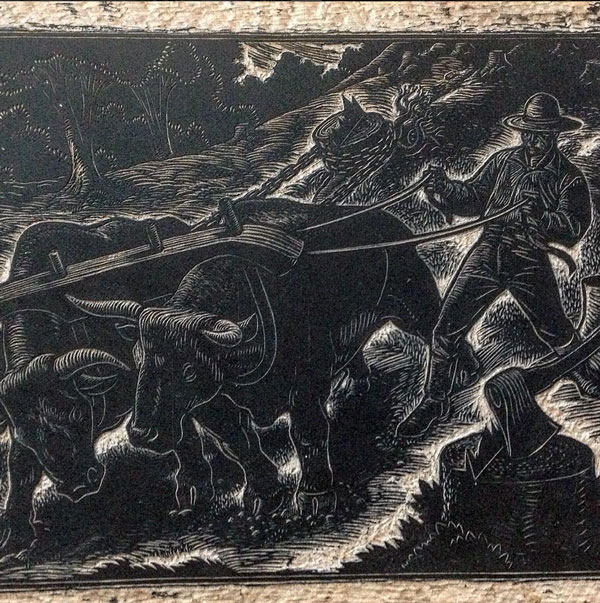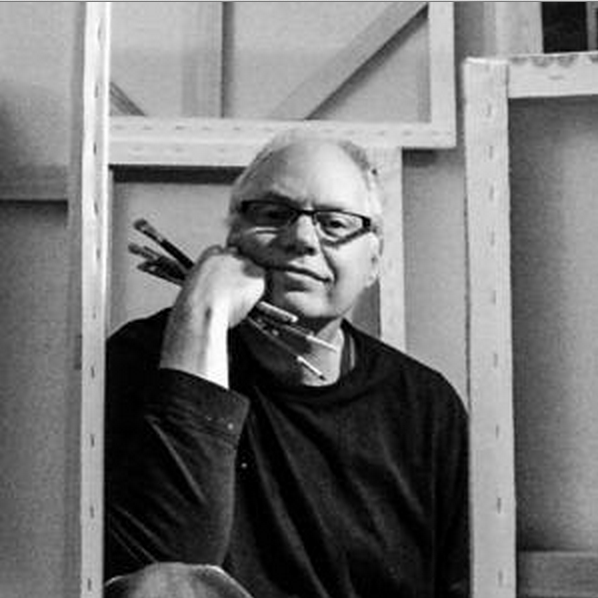Brad Teare is a talented woodcut artist with a background in design and landscape painting. Teare is also a prolific social media experimenter. His YouTube channel passed 1 million views earlier this summer with titles like Getting Greens Right and Glazing and Impasto. Teare and his wife, the artist Debra Teare, live in Utah.
What are the challenges in working with wood cuts? Color woodcut using the lost key method takes an incredible amount of planning which is a challenge (the lost key method creates a more painterly looking woodcut without the conventional dark outlines containing flat color). But despite the hurdles the results of this technique are so rewarding I’m constantly returning to it. Color woodcut has phases–the design phase, the color planning phase, the carving phase, and the printing phase. Lots can go wrong at any phase so you have to stay organized.
The biggest challenge of being a woodcut artist has been connecting with collectors. Two decades ago most cities had print galleries and people knew what fine art prints were. That’s no longer true. But I recently started an Instagram feed where I explain the woodcut process. I intend to post every day about block printing until my show in April 2016. It’s my first one-person woodcut show and I’m very enthused about it. I have a link to the feed on my blog as well. So far people seem to be enjoying it.
What do you enjoy about the medium? I love the raw, emotional energy of woodcut. Paradoxically woodcut can also have symbolic and intellectual power as well. All art forms can have those qualities but you almost have to try to excise those traits from woodcut. It’s like the medium wants to occupy a certain metaphysical space. It’s that paradox that keeps me coming back. Despite the challenges I always had a certain knack for woodcut. I discovered the art of Rockwell Kent as a teenager and loved the power he evoked with his work. When I had a chance to buy an antique press for $60 during my last year in college I jumped at it even though I knew next to nothing about block printing. I ordered some tools and blocks and shortly thereafter printed my first wood engraving. The print went into the portfolio that landed my first illustration job in New York City. I also enjoy the physical act of cutting the blocks. Once I have a design transferred to the block it’s relaxing to carve. The process is almost a form of meditation. Ideally I like to sit outside while I carve. I’m building a new studio with French doors and a porch so I can work outside when weather permits.
Five years ago you started uploading instructional videos on YouTube. Explain your motives, your experience, and the reward. Several years ago my brother, who is a web designer, repeatedly told me I needed to write a blog and if I didn’t I was missing a huge opportunity. To placate him I started the blog. I had no expectations for it. My only intent was to give a few artists seeking practical knowledge a resource to move their creative projects forward. I grew up in Kansas where there was little access to art information. Because of that I’ve always felt behind in my career. It’s not a good feeling and I wanted to help fellow artists get early access to artistic fundamentals.
The videos were a complete fluke and I can’t remember why I started them or how I managed to overcome my introversion to make them. With the first video I remember thinking, “dozens of people are going to watch this!” and feeing quite terrified. If I had known that over a million people would watch the videos I probably would have had a heart attack. Usually I made the videos late at night when I was approaching exhaustion so the quality suffered. But people didn’t seem to mind and I started getting emails from all over the world. It’s especially gratifying to get email from artists in developing countries that might not have access to art books, workshops, and DVDs. My blog is translated into 50 languages, which is extremely satisfying. I’ve grown too. I’m more relaxed on camera. I think my videos have gotten better over the years. I’ve grown artistically as the process of sharing ideas has clarified my own vision.
Follow Brad Teare on Instagram.
